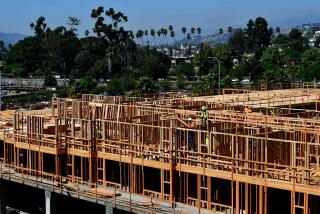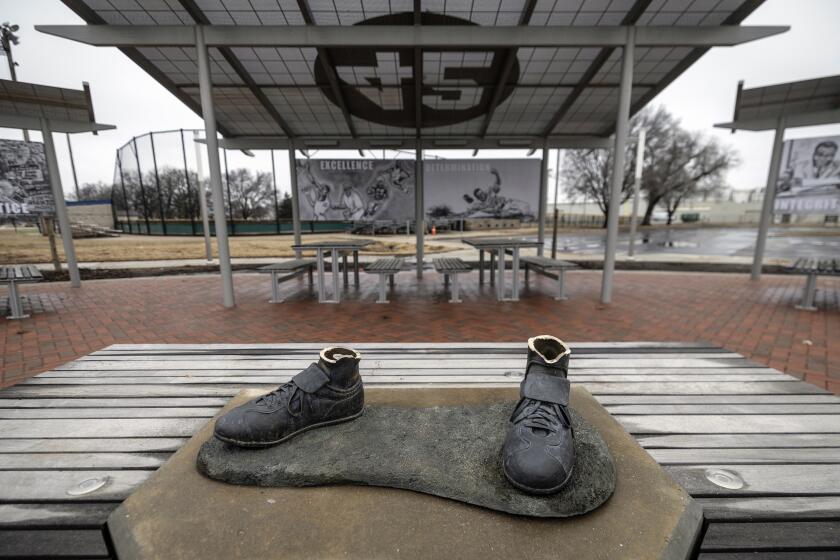South Africa’s Soweto booms
soweto, south africa -- The towering construction cranes and the cacophony of churning concrete trucks and rumbling cherry pickers are the sights and sounds of a business boom in South Africa’s most famous township.
Black South Africans are reaping the benefits of a growing economy, and at the heart of it all is Soweto, the sprawling township in the southwest of Johannesburg that was at the center of the anti-apartheid struggle.
Soweto “historically has been the leader in our national movement toward freedom . . . and we expect no less from it in our struggle toward the economic growth of the majority,” said Jason Ngobeni, executive director for the economic development of Johannesburg.
In the last five years or so, new houses have been built in the once overcrowded and underdeveloped area. Roads have been paved and electricity installed. New parks have been landscaped and a derelict power station will become an entertainment complex.
Most obvious, though, are the shopping malls, once chiefly associated with Johannesburg’s wealthy northern suburbs. The latest in Soweto, which former President Nelson Mandela opened Thursday by cutting a gold ribbon, is the 700,000-square-foot Maponya Mall.
“I have been one of the sons of this town for a very long time. I have seen it grow,” developer Richard Maponya said at the opening, standing before a statue inspired by an iconic photograph of a dying Hector Pieterson, youngest victim of the 1976 Soweto student uprising against apartheid.
Soweto is the most populous black urban residential area in the country, with about 1 million people, nearly a third of Johannesburg’s total population.
Its cosmopolitan community has defined black urban style in South Africa. Soweto has its own wine festival, was a venue for this year’s SA Fashion Week, and last month hosted an international break-dancing competition.
Soweto was created in the early 1960s by the apartheid government to house the laborers, most of them black, who worked in the mines and other industries in the city. Many families were settled there after being forced out of their homes in areas declared for white residents only.
It has been home to some of the country’s most important political figures, such as Mandela and fellow Nobel Peace Prize laureate Archbishop Desmond Tutu.
In a nod to its importance, city officials have invested heavily in Soweto’s development. It has become one of Johannesburg’s most marketable tourist attractions, and historical sites linked to the anti-apartheid movement have been upgraded.
“A lot of the plans the city has are to ensure that the townships that have been previously excluded from mainstream businesses . . . are integrated,” development director Ngobeni said.
Ngobeni says that the spending power of Soweto amounts to about $70 million annually and that property prices have doubled in the last two years.
The South African economy has seen annual growth in the last four years of 5%, the highest in 20 years. Although this has created an elite of black businessmen, the government has been challenged to see that the vast majority of South Africa’s black poor also benefits.
Goolam Ballim, chief economist for Standard Bank, says “nascent gains” are being made with 2.5 million jobs created in the last five years, 70% of which have gone to black workers. In Soweto, the number of lower-middle-income people -- those earning $570 to $1,000 a month -- has tripled to 150,000.
“In a relative sense Soweto is getting wealthier,” Ballim said. “If mainstream businesses ignore Soweto, they do it at their peril.”
More to Read
Start your day right
Sign up for Essential California for news, features and recommendations from the L.A. Times and beyond in your inbox six days a week.
You may occasionally receive promotional content from the Los Angeles Times.






